The point of interactive learning is to involve students within an engaged, two-way “conversation” through the whole learning process. Ironically, interactive learning is not just limited to conversation, but instead is a dedicated practice which seeks to remove the typical “hypodermic” model of the lecturer talking at a crowd. From the Chief Learning Magazine perspective, it even seeks to dispel with the ‘guide on the side’ hands-off approach to lectures and teaching, which can be a little too laissez-faire, particularly with younger age groups where the advice of a sage is needed at various points to help a group reach the lesson objectives (although the goal is to encourage this independently).
Interactive learning fundamentally looks to do away with the (some say false) dichotomy of the ‘Sage on a Stage or Guide from the Side“, and replace it with communal, collaborative activity.
It is different to most e-learning activities and practices in that learner participation is active, and there is usually some ‘live’ or eventful’ element to the creation and execution of a lesson in this manner.
When we provide students with interactive lessons they are immersed in the content and take an active role in their learning.
According to interactive lesson aficionados ‘Ditch That Textbook‘, they said that interactive learning helps support memory and recall. Specifically:
Interactive lessons stick. They increase engagement and get everyone in on the learning. They are the lessons we all remember.
Ditch That Textbook
Interactive learning is coming to the fore as ongoing research is looking at how to help young people and children to learn, critically think and retain information.
Students may be able to think more clearly when they are able to enter a flow state and have the freedom to focus – however it has also been shown that when the learning journey can include information from a variety of sources simultaneously, can encourage simultaneous processing. This idea of being able to tie different stimuli into one concept is similar to mind-mapping – but works with disparate ideas that congeal together, as opposed to one idea that dissipates. It is related to the ‘PASS’ theory of intelligence, and also helps to highlight where successive processing skills are weaker or may need bolstering – a reason why so many interactive lessons include ‘breakout’ sessions and individual “alone focus” sessions, to help ‘switch’ between the two types of knowledge gain processes.
Ultimately, interactive learning is an active practice which demands engagement and creates a learning experience, within which the lesson objectives are inherent. While challenging, there are ways to achieve interactive learning by following some of the fundamentals of interactive learning.


Interactive Learning can be planned in advance using passive tools
Interactivity is about ensuring students are ready at any point to become active participants, or to respond. You might plan a lesson with a problem at the start, provide the tools and hints, with a goal being a solution that needs to be found by the end of the lesson along with a rationale of how the solution was achieved. Problem-based learning (PBL) method is popular in school settings – as much as it is in business school and continuing professional development settings.
Or – you might jsut want the tech do it for you. A great tool is Nearpod. Nearpod is the tool all the cool teachers are using, or at least so we’ve heard! Given the trend towards remote learning, Nearpod’s toolset as an interactivity “add on” helps teachers plan their lessons like they might do ‘normally’ (such as a slides presentation, mini workbook, or PowerPoint), and then use Nearpod’s online editing tools to create engaging lessons which demand attention both in the class, or from home. These include VR field trips and 360 degree ‘spin round’ content, quizzes, contests and the ability to launch these lessons live, or for them to roll at the studen’ts pace.
What’s more, Nearpod’s poewrful interactivity toolkit has a free tier, which means yes: there is such as thing as free VR for education software! Nearpod has 450 ready-to-run VR lessons.
Interactive lesson plans must incorporate as many senses as possible
While lesson planning should be the vast majority of a teacher’s work, it so-often is not, with old paper processes and endless marking being part of the major gripes of teachers globally who have to think about the other side of teaching – teaching their bosses!
It can therefore not be at the top of mind to consider how students might be engaged in a multitude of ways – not just listening; not just watching something. This is where we hasten back to the idea of simultaneous processing – engaging students in activities that help being subjects uquite literally to life, as an experience.
Hot Seat Three
Hot Seat is a controversial interactive technique – some teachers don’t go for it as it can create a split in the dynamics of a lesson where extroverts thrive and introverts feel unnecessarily pressured. Done incorrectly, it can feel foolish and desperate on the part of the teachers.
But Hot Seats don’t have to be individualised targets. Instead, students can be given a role – Hosts, Hot Seaters and Sage Panel. The Sage Panel help decide how collaborative and fair a team is. The Hot Seaters are participants who are asked to go in groups of three – and the three people each have to give an answer for all three to count. Points are given for the correct answers, and points are tripled for evidence of positive conferring and collaboration.
The ‘host’ who chooses the questions for the hot seat is awarded to a rotation of the top 5 students in that lesson, to help encourage fuller participation that isn’t exclusively held by the loudest or more confident.
It is important for a teacher to remain in control of this kind of dynamic, which is where obviously forfeits and penalties come into play to boost reminders that while a lesson is fun, breaking the rules still has consequences.
Word Mash Collage
A lesson designed to support students towards the end of their course, Word Mash Collage is basically a lesson designed to help students build a knowledge graph of keywords, answers and ideas that they’ll need to remember for their exams. It can help diffuse the stress around this time of year and encourage any last-minute discussion on topics or ideas that a student is unsure of.
The goal is to create a giant keyword collage from which a student might be able to come up with the correct exam answers. It is similar to mind-mapping, but a bit more analogue with cuttings and sticking words and phrases, designed around building memory ‘cues’ rather than verbatim and rote learning. Students should be able to receive a copy of the collage either as a photo, or as a pre-made mindmap.
Whiteboard animations are similar in principle to the Word Mash, but can be a little bit more passive if the creation of the animation is down to the teacher, rather than the student.


Push the envelope with 100% interactive learning lessons
Escape Rooms
Escape rooms don’t have to be scary! Or murder mystery themed (- although, one argues this may be appropriate for some elements of a History curriculum)! Escape rooms work in a similar way to the much vaunted ‘jigsaw’ technique of teaching, where the clues are provided throughout the course-length or even in the lessons prior, building up to a problem-solving experience or sequence of experiences that can be planned as a group lesson or a ‘breakout’ session. The point of solving the jigsaw is to reach the lesson objectives ‘naturally’.
Digital Escape Rooms
And of course, in the age of remote and distance learning, extremely creative “digital escape rooms” – or perhaps digital escape worlds – are becoming fashionable with a certain tier of teachers from across the world. Going back to ‘Ditch That Textbook’, teacher and author Mani Tolen creates a full on plan and list of free resources for teachers to make the most of in creating their own digital escape rooms of students. that you can take away as your own strategy as a means of creating online, remote interactive lessons without asking for a budget.
Quiz Show
‘Quiz shows’ in class are usually kept as an end-of-term activity, to help spike interest at what is usually a low-interest and high boredom time of year; (or it is one of the most stressful with examinations or a change of year and class!). Either way the quiz show lesson can still serve as a fun activity that encourages dynamic group engagement, but still allows the teacher to stay in control of the lesson itself. You could focus questions on exam questions, with ‘game rounds’ that require pairs tasks or ‘ask the audience’ style discussions to help keep the teaching format refreshing.

